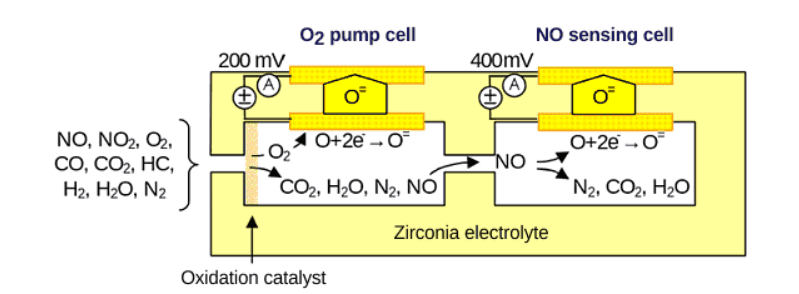 daisy
daisy  December 24,2025
December 24,2025
Commercial NOx sensors for automotive applications are primarily YSZ electrochemical sensors of the amperometric type. Picture below illustrates the basic operating principle. The sensor uses two or three electrochemical cells in adjacent chambers. The first cell electrochemically pumps O2 out of the sample so it does not interfere with the NOx measurement in the second cell. The need to remove O2 allows this type of NOx sensor to serve a dual purpose; it can also detect exhaust O2 level.

picture 1. Schematic representation of an amperometric NOx sensor
The O2 in the first cell is reduced and the resulting O ions are pumped through the zirconia electrolyte by applying a bias of approximately -200 mV to -400 mV. The pumping current is proportional to the O2 concentration. The remaining gases diffuse into the second cell where a reducing catalyst causes NOx to decompose into N2 and O2. As with the first cell, a bias of -400 mV applied to the electrode dissociates the resulting O2 which is then pumped out of the cell; the pumping current of the second cell is proportional to the amount of oxygen from the NOx decomposition. An additional electrochemical cell can be used as a Nernstian lambda sensor to help control the NOx sensing cell [Rheaume 2010].
All HC and CO in the exhaust gas should be oxidized before the NOx sensing cell to avoid interference. Also, any NO2 in the sample should be converted to NO prior to NOx sensing to ensure the sensor output is proportional to the amount of NOx.limited.